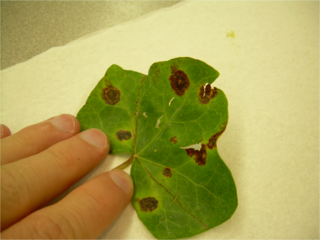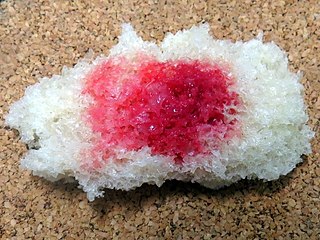
Pseudomonadota is a major phylum of Gram-negative bacteria. The renaming of several prokaryote phyla in 2021, including Pseudomonadota, remains controversial among microbiologists, many of whom continue to use the earlier name Proteobacteria, of long standing in the literature. The phylum Proteobacteria includes a wide variety of pathogenic genera, such as Escherichia, Salmonella, Vibrio, Yersinia, Legionella, and many others. Others are free-living (non-parasitic) and include many of the bacteria responsible for nitrogen fixation.
Pseudoalteromonas is a genus of marine bacteria. In 1995, Gauthier et al proposed Pseudoalteromonas as a new genus to be split from Alteromonas. The Pseudoalteromonas species that were described before 1995 were originally part of the genus Alteromonas, and were reassigned to Pseudoalteromonas based on their rRNA-DNA analysis.

The Thiotrichales are an order of Pseudomonadota, including Thiomargarita magnifica, the largest known bacterium.

The Legionellales are an order of Pseudomonadota. Like all Pseudomonadota, they are Gram-negative. They comprise two families, typified by Legionella and Coxiella, both of which include notable pathogens. For example, Q fever is caused by Coxiella burnetii and Legionella pneumophila causes Legionnaires' disease and Pontiac fever.

The Methylococcaceae are a family of bacteria that obtain their carbon and energy from methane, called methanotrophs.

The Aeromonadales are an order of Pseudomonadota, with 10 genera in two families. The species are anaerobic. The cells are rod-shaped. Some species of this order are motile by a single polar flagellum; others are not motile.

The Pasteurellaceae comprise a large family of Gram-negative bacteria. Most members live as commensals on mucosal surfaces of birds and mammals, especially in the upper respiratory tract. Pasteurellaceae are typically rod-shaped, and are a notable group of facultative anaerobes. Their biochemical characteristics can be distinguished from the related Enterobacteriaceae by the presence of oxidase, and from most other similar bacteria by the absence of flagella.

The Xanthomonadales are a bacterial order within the Gammaproteobacteria. They are one of the largest groups of bacterial phytopathogens, harbouring species such as Xanthomonas citri, Xanthomonas euvesicatoria, Xanthomonas oryzae and Xylella fastidiosa. These bacteria affect agriculturally important plants including tomatoes, bananas, citrus plants, rice, and coffee. Many species within the order are also human pathogens. Species within the genus Stenotrophomonas are multidrug resistant opportunistic pathogens that are responsible for nosocomial infections in immunodeficient patients.

The Cardiobacteriaceae are a family of Pseudomonadota, given their own order. They are Gram-negative and rod-shaped, with diameters around 0.5 to 1.7 μm and lengths from 1–6 μm.

The Alteromonadales are an order of Pseudomonadota. Although they have been treated as a single family, the Alteromonadaceae, they were divided into eight by Ivanova et al. in 2004. The cells are straight or curved rods. They are motile by the use of a single flagellum. Most of the species are marine.

The Moraxellaceae are a family of Gammaproteobacteria, including a few pathogenic species. Others are harmless commensals of mammals and humans or occur in water or soil. The species are mesophilic or psychrotrophic (Psychrobacter).

Gammaproteobacteria is a class of bacteria in the phylum Pseudomonadota. It contains about 250 genera, which makes it the most genus-rich taxon of the Prokaryotes. Several medically, ecologically, and scientifically important groups of bacteria belong to this class. It is composed by all Gram-negative microbes and is the most phylogenetically and physiologically diverse class of Proteobacteria.
Alteromonas is a genus of Pseudomonadota found in sea water, either in the open ocean or in the coast. It is Gram-negative. Its cells are curved rods with a single polar flagellum.
Pseudoalteromonas atlantica is a marine bacterium, which has been shown to act as a primary producer of biofilms and exhibit virulence against Cancer pagurus, a species of crab, through secretion of extracellular products.

Corticovirus is a genus of viruses in the family Corticoviridae. Corticoviruses are bacteriophages; that is, their natural hosts are bacteria. The genus contains two species. The name is derived from Latin cortex, corticis. However, prophages closely related to PM2 are abundant in the genomes of aquatic bacteria, suggesting that the ecological importance of corticoviruses might be underestimated. Bacteriophage PM2 was first described in 1968 after isolation from seawater sampled from the coast of Chile.
Pseudoalteromonas agarivorans is a marine bacterium.
Pseudoalteromonas citrea is a yellow-pigmented marine bacterium that is antibiotic-producing and was isolated from Mediterranean waters off Nice. Originally named Alteromonas citrea, nearly two decades later it was reclassified as part of the Genus Pseudoalteromonas.
Pseudoalteromonas aliena is a marine, aerobic, heterotrophic bacterium that has been collected from Amur Bay.
κ-Carrageenase is an enzyme with systematic name κ-carrageenan 4-β-D-glycanohydrolase (configuration-retaining). It catalyses the endohydrolysis of (1→4)-β-D-linkages between D-galactose 4-sulfate and 3,6-anhydro-D-galactose in κ-carrageenans

The prodiginines are a family of red tripyrrole dyestuffs produced by Gammaproteobacteria as well as some Actinomycetota. The group is named after prodigiosin (prodiginine) and is biosynthesized through a common set of enzymes. They are interesting due to their history and their varied biological activity.












